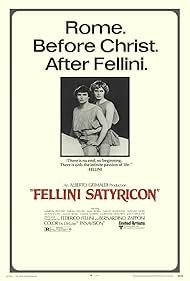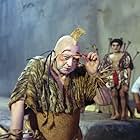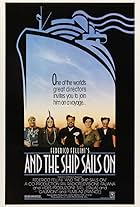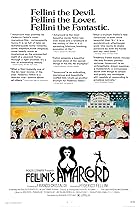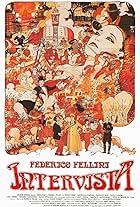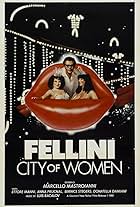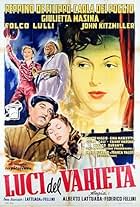A series of disjointed mythical tales set in first-century Rome.A series of disjointed mythical tales set in first-century Rome.A series of disjointed mythical tales set in first-century Rome.
- Nominated for 1 Oscar
- 5 wins & 8 nominations total
Mario Romagnoli
- Trimalcione
- (as Il Moro)
Danika La Loggia
- Scintilla
- (as Danica la Loggia)
Lucia Bosè
- La matrona
- (as Lucia Bosé)
Joseph Wheeler
- Il suicida
- (as Joseph Weelher)
George Eastman
- Minotauro
- (as Luigi Montefiori)
Storyline
Did you know
- TriviaGian Luigi Polidoro registered the title Satyricon (1969) for his movie first. Federico Fellini fought to use the title for his movie but lost the case. Subsequently the title was changed to Fellini Satyricon.
- GoofsIn one version, Joseph Wheeler is credited as 'Joseph Weelher'.
- Quotes
Trifena: Lichas, take your groom's hand. Remember you must be faithful to him forever. And you, groom, know that you must forget your past taste for young boys. A husband takes no liberties. You must dedicate your entire self to your bride forever. May complete harmony and great happiness be yours. Venus favors marriages held at sea.
- ConnectionsEdited into Fellini: I'm a Born Liar (2002)
- SoundtracksThe Drums for the Niegpadouda Dance
From Anthology of Music of Black Africa
Recorded by Everest Records
Arranged by Bernard C. Salomon
Published by Arvon Music
Featured review
Fellini Satyricon is based on the first century "novel" by the Roman writer Petronius Arbiter, who was a sometime crony of the degenerate emperor Nero, and who was ultimately one of his numerous victims. If any writer from this period is a perfect match-up for movie adaptation by Fellini, it is certainly Petronius. The structure of the book is similar to the organization of many Fellini movies -- a series of somewhat loosely related stories woven around the adventures of a central character, who in this case is an attractive scoundrel, or, rather, two scoundrels. The movie itself features comedy of several varieties -- the simultaneous send-up of the hedonistic ex-slave Trimalchio's pretensions and of the hypocrisy of the philosopher who is one of his meal-grubbing guests; the loss of sexual prowess in front of a jeering crowd of onlookers; the attempt to steal a hermaphroditic "god" from his/her shrine; the escapes from death by the hand of Nero's grim sea-captain (who marries Encolpius in a homosexual sailor parody of a wedding ceremony) and from the Minotaur (who says, "Today I have lost the contest but I have made a new friend"). And there is much more, often bizarre and always entertaining. The ambience of Rome and of various corners of the empire is depicted beautifully. There are brief visual "flashes" only marginally related to the story which are penetrating and lasting in their imagery (for instance, the Roman general leading a column of soldiers on a destructive march). And the movie ends on a beautiful note -- the fading of Encolpius at a banquet into a wall mosaic that has lasted to the present day -- a symbol of the timelessness of humanity? Perhaps, but by the way, Fellini has led us here by means of a very special banquet, a cannibalistic feast on the corpse of a wealthy man who makes this ceremony a condition of sharing in the proceeds of his last will and testament. After two thousand years the grimness is gone, but the beauty and humor remain.
- How long is Satyricon?Powered by Alexa
Details
Box office
- Budget
- $3,000,000 (estimated)
- Gross US & Canada
- $1,135,943
- Gross worldwide
- $1,138,108
- Runtime2 hours 9 minutes
- Sound mix
- Aspect ratio
- 2.35 : 1
Contribute to this page
Suggest an edit or add missing content

